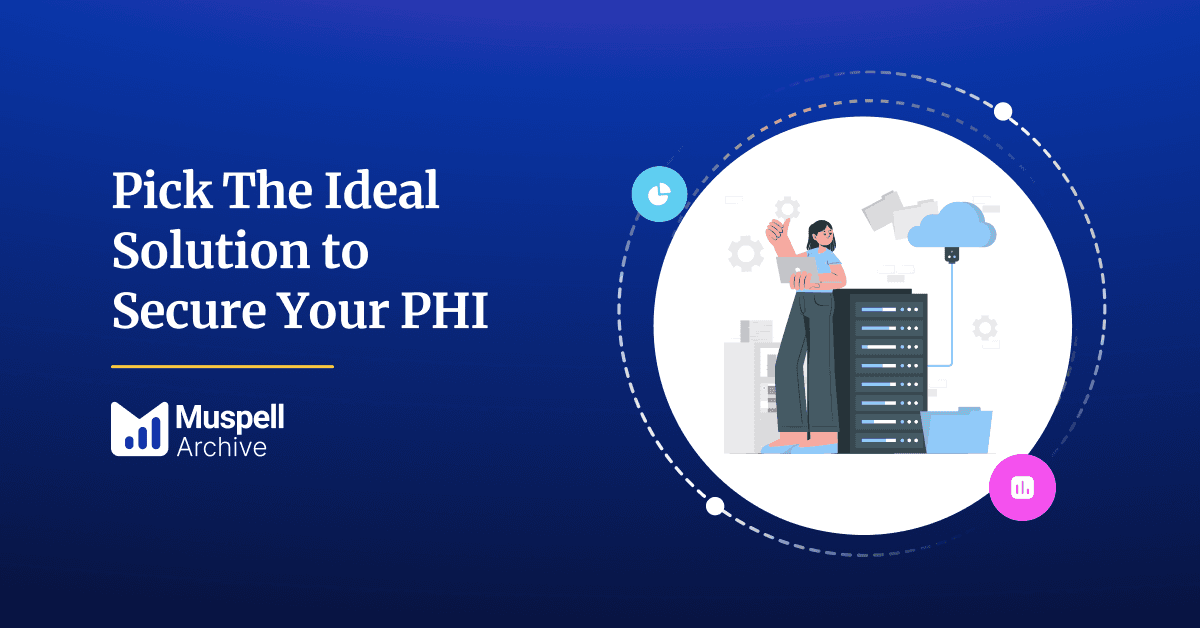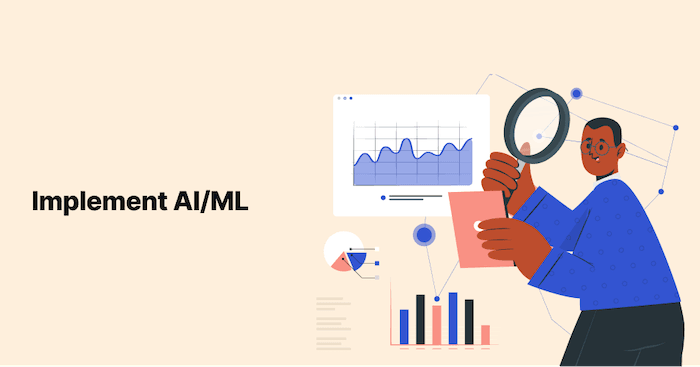
Unlocking Cost Savings with Healthcare Data Archival
Healthcare data archival offers healthcare leaders significant potential for reducing costs. Integrating a …

Since the release of the Cures Act Final Rule in May 2020, the US healthcare industry has been experiencing a transformative wave driven by patient-centricity and healthcare interoperability. Healthcare organizations generate and accumulate vast amounts of patient information, which is highly valuable both for the healthcare organization and the evolving ecosystem, slowly transitioning into a highly connected network of core medical applications.
The healthcare industry is transforming into a competitive space where the Protected Health Information (PHI) your healthcare facility accrues is essential for care continuity. The need for effective data archival solutions has become increasingly critical, so choosing the ideal healthcare data archiving solution is a strategic decision impacting patient care, operational efficiency, and the overall success of your healthcare institution. In this blog post, we explore key considerations in ensuring the accessibility, security, and longevity of critical healthcare information.
Healthcare software applications always include crucial features that align with the specific needs of a healthcare facility. As a primary decision-maker, your goal should be to prioritize these features. However, safeguarding your firm's Protected Health Information (PHI) through a healthcare data archival solution involves more than just addressing cost and regulatory compliance requirements. The following factors are essential considerations:
Scalability: Electronic Health Records (EHRs), diagnostic imaging data, laboratory reports, or data from medical devices are fundamental to your healthcare facility’s business operations, so. your healthcare data archival solution must effectively serve clinicians, doctors, and patients (through EHR patient portals). A scalable solution guarantees that your archival infrastructure remains robust and responsive to the evolving demands of the healthcare environment.
Interoperability: Healthcare data archiving does more for your healthcare facility than protecting your PHI. It transforms your legacy EHR data into the current industry standard FHIR. Remember that healthcare IT applications' compatibility with the FHIR data standard is now an official mandate from the Department of Health and Human Services (HHS). It emphasizes the need for a solution that is an FHIR-native solution.
Data Security: Access controls, comprehensive audit trails, and encryption protocols record user activity on your application. Every healthcare data archival solution will contain many necessary features safeguarding PHI security. But one that offers your granular visibility over user activity and facilitates regular data audits will be the one to choose. Innovation is the key to excellence, and your choice of healthcare data archiving solution must resonate with that.
Intuitive Design: The importance of an intuitive design cannot be overstated, as it directly impacts the ease of access and management of critical healthcare information. A well-designed interface aligns with workflow of healthcare professionals, enabling them to swiftly and effortlessly navigate the archival system. This, in turn, contributes to a more streamlined and effective healthcare environment, where time-sensitive decisions can be made with confidence, unburdened by the constraints of a cumbersome user interface.
Search and Retrieval Capabilities: Advanced search functionalities such as metadata tagging and indexing mechanisms enhance data retrieval precision and speed, fortifying your healthcare facility's efficiency. Whether accessing a patient's medical history in an emergency or retrieving specific diagnostic records for comprehensive care, a solution with robust search and retrieval capabilities is an invaluable asset in efficient healthcare operations.
Ultra Customizability: Your users must be able to adjust layouts, user screens, services and fine-tune settings to match their workflows. Enhanced customizability ensures users enjoy personalized access, permissions, and service area configurations that fit their needs.
FHIR-native: FHIR is a widely accepted modern standard for representing and exchanging healthcare data. Using a FHIR-native archival solution ensures the archived data is represented in a standardized format, simplifying the exchange and sharing of data with other healthcare systems and organizations, making it directly compliant with regulations such as the Cures Act.
Patient Data Purge: Your ideal archival solution should provide opportunities to automate the patient data purge process. Enabling users to preset criteria to remove patient data in bulk introduces accuracy and shorter lead times in the purge process.
Archival For All Data Types: The solution should be capable of managing and archiving all kinds of data types and workflows, including clinical data, non-clinical data, documents, images, specialty workflows, and legacy record management.
Patient-centric View: Effortless navigation and instant insights are crucial to usability. Your ideal solution must be easy to use, offering intuitive features like a unified dashboard focusing on patient data. It should make analyzing instant insights effortless and precise.
Asynchronous Release of Information: The ideal solution must offer a flexible and asynchronous Release of Information (ROI) workflow in compliance with the ONC’s 21st Century Cures Act. This feature ensures enhanced access to health information, allowing patients to designate recipients, delivery preferences, and sharing conditions.
Secure EHR-Role-Based Data Access: Data security is paramount. Your ideal health data archival solution should offer granular Role-Based Access Control (RBAC) on both the user and service area levels. This tailored access permissions system ensures data integrity and security.
Data Migration and Portability:Highlight the significance of a solution that facilitates smooth data migration from legacy systems to the new archiving environment. Discuss features that allow healthcare organizations to retain control and access to their data, even if they choose to change archiving solutions in the future.
Navigating the complex needs of healthcare data archiving requires a comprehensive understanding of its unique challenges. From data security, to the need for seamless interoperability and accessibility, healthcare organizations are confronted with many factors influencing their choice of archival solutions. Your decision is the foundation of a resilient and data-driven healthcare ecosystem.
Join over 3,200 subscribers and keep up-to-date with the latest innovations & best practices in Healthcare IT.

Healthcare data archival offers healthcare leaders significant potential for reducing costs. Integrating a …

Our world has changed. (How’s that for an understatement?) We’re collectively watching and waiting as the …

Artificial Intelligence, Machine Learning, and Data Science are the buzzwords-du-jour for healthcare …